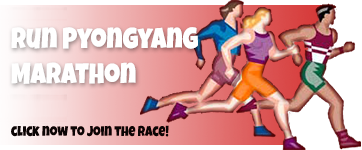Pyongyang major museums
Korean Art Gallery | Korean Revolution Museum | Central History Museum
Korean Art Gallery
The Korean Art Gallery was opened in Juche 43 (1954). This gallery is housing a great number of precious ancient works, and works created during the anti-Japanese revolutionary struggle. More than 900 pieces of works, represented mainly by Korean paintings, are preserved here.
Pictures and ceramic designs produced in the period of the Li Dynasty which lasted for over 500 years from the late 14th century are on display. The modern fine arts are represented by Korean paintings based on the traditional idiom, oil painting, prints, sculptures and handicrafts designs. There are works which depict the revolutionary idea of the President Kim Il Sung and leader Kim Jong Il.
Korean Revolution Museum
The museum displays the materials showing the revolutionary history of President Kim Il Sung and General Kim Jong Il and struggles of the Korean people systematically. It was founded in August Juche 37 (1948). It is situated on Mansu Hill in the city centre. It is composed of 90 rooms dividing into a general introduction hall and rooms arranged periodically, showing anti-Japanese revolutionary armed struggle, democratic revolution and first period of transition to socialism, Fatherland Liberation War and the building of socialism. There are rooms related to leader and comrades-in-arms, national reunification, Chongryon and etc.
Central History Museum
The Korean Central History Museum displays relics and remains and materials proving long Korean history starting from the primitive society to the modern age. It was opened in Juche 34 (1945), earlier than any other cultural institutions.
On display in the Ancient times rooms are relics in the periods of Kojoson, Puyo, Chinkuk and other states of the ancient times. In the rooms for the Feudal times are exhibites the remains and materials of Koguryo, Paekje, Silla, Palhae abd and Li dynasties.
Originally located on Moran Hill, it was moved to the present site in 1977. The museum is actually more interesting than it sounds, particularly if you are interested in early Korean history. It is conveniently located in Kim Il Sung Square across from the Korean Art Gallery and near the Grand People’s Study House. Its 19 rooms house over 100,000 historical relics.
It is estimated that 1.6 million members of the Korean People's Army (KPA) and 150,000 ex-patriate Koreans and other foreigners have visited here.




























